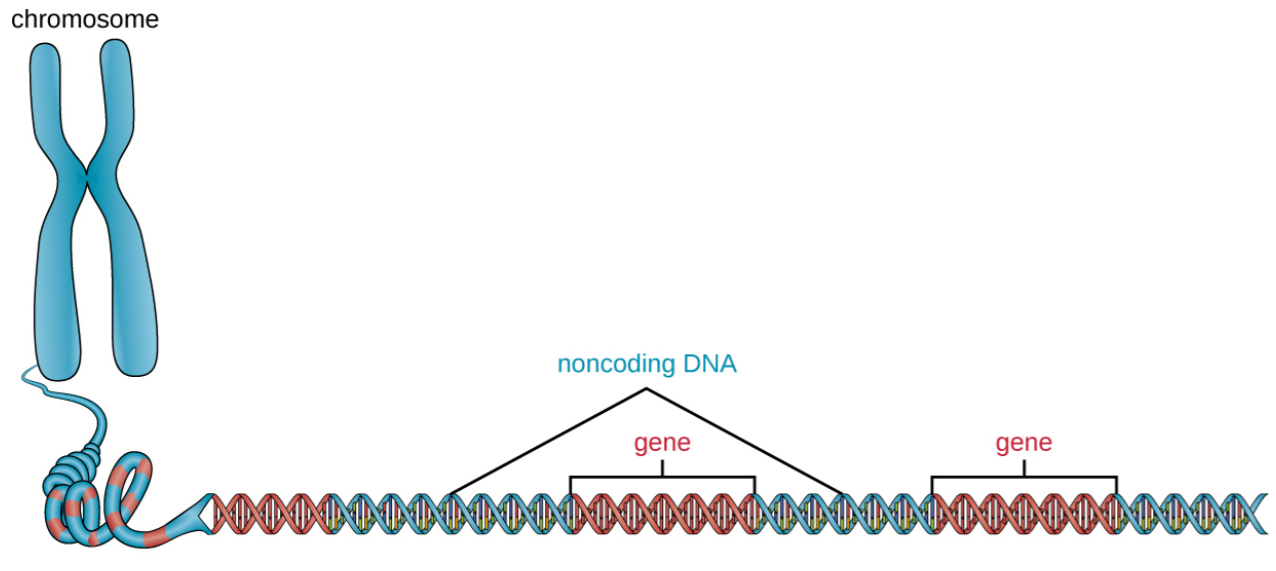
What is noncoding DNA
 المؤلف:
Genetics Home Reference
المؤلف:
Genetics Home Reference
 المصدر:
Help Me Understand Genetics
المصدر:
Help Me Understand Genetics
 الجزء والصفحة:
الجزء والصفحة:
 11-10-2020
11-10-2020
 2803
2803
What is noncoding DNA?
Only about 1 percent of DNA is made up of protein-coding genes; the other 99 percent is noncoding. Noncoding DNA does not provide instructions for making proteins. Scientists once thought noncoding DNA was “junk,” with no known purpose. However, it is becoming clear that at least some of it is integral to the function of cells, particularly the control of gene activity. For example, noncoding DNA contains sequences that act as regulatory elements, determining when and where genes are turned on and off. Such elements provide sites for specialized proteins (called transcription factors) to attach (bind) and either activate or repress the process by which the information from genes is turned into proteins (transcription). Noncoding DNA contains many types of regulatory elements:
• Promoters provide binding sites for the protein machinery that carries out transcription. Promoters are typically found just ahead of the gene on the DNA strand.
• Enhancers provide binding sites for proteins that help activate transcription. Enhancers can be found on the DNA strand before or after the gene they control, sometimes far away.
• Silencers provide binding sites for proteins that repress transcription. Like enhancers, silencers can be found before or after the gene they control and can be some distance away on the DNA strand.
• Insulators provide binding sites for proteins that control transcription in a number of ways. Some prevent enhancers from aiding in transcription (enhancer-blocker insulators). Others prevent structural changes in the DNA that repress gene activity (barrier insulators). Some insulators can function as both an enhancer blocker and a barrier.
Other regions of noncoding DNA provide instructions for the formation of certain kinds of RNA molecules. RNA is a chemical cousin of DNA. Examples of specialized RNA molecules produced from noncoding DNA include transfer RNAs (tRNAs) and ribosomal RNAs (rRNAs), which help assemble protein building blocks (amino acids) into a chain that forms a protein; microRNAs (miRNAs), which are short lengths of RNA that block the process of protein production; and long noncoding RNAs (lncRNAs), which are longer lengths of RNA that have diverse roles in regulating gene activity.
Some structural elements of chromosomes are also part of noncoding DNA. For example, repeated noncoding DNA sequences at the ends of chromosomes form telomeres. Telomeres protect the ends of chromosomes from being degraded during the copying of genetic material. Repetitive noncoding DNA sequences also form satellite DNA, which is a part of other structural elements.

 الاكثر قراءة في مواضيع عامة في الاحياء الجزيئي
الاكثر قراءة في مواضيع عامة في الاحياء الجزيئي
 اخر الاخبار
اخر الاخبار
اخبار العتبة العباسية المقدسة


